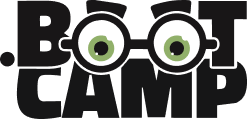A New Era of Learning
With the advent and growth of online and hybrid courses, there’s a golden opportunity not just for learning, but also for showcasing what you’ve learned. Many of these courses offer hands-on projects, which can be instrumental in crafting an impressive portfolio. Indeed, having a portfolio filled with relevant projects can significantly increase your marketability to potential employers.
The Importance of Portfolios in Today’s Market
Firstly, before diving into the “how-to” section, let’s explore the “why”. In the competitive job landscape, having a tangible collection of your work can set you apart. Gone are the days when just a degree was enough. Today, employers often seek evidence of hands-on experience and a demonstration of skill. Hence, portfolios, especially those derived from course projects, can speak volumes about your expertise.
Selecting The Right Courses
When starting out, it’s paramount to pick courses that align with your career goals. While many courses offer theoretical knowledge, you should gravitate towards those that emphasize practical projects. For instance, if you’re an aspiring web developer, opt for courses that culminate in building a website or an application. On the other hand, budding data analysts might prioritize courses which involve intricate data visualization or prediction models.
Organizing Your Portfolio: Setting the Stage
After you’ve accumulated a few projects, it’s time to strategize on presentation. Presentation, after all, is key. You could have phenomenal projects, but if they’re presented poorly, their impact could be diminished. Hence, follow these steps for effective organization:
- Categorize Thoughtfully: If you’ve dabbled in various domains, categorize your projects. For instance, graphic designers might have categories like ‘Branding’, ‘Illustrations’, and ‘Web Designs’.
- Prioritize Quality Over Quantity: Rather than inundating your portfolio with every project, choose those that are most impressive and relevant.
- Add Detailed Descriptions: For every project, detail the objective, the tools used, and the challenges faced. This provides context and showcases your problem-solving skills.
Articulating Project Insights: Beyond the Basics
Once the structural aspects are sorted, delve deeper. Remember, your portfolio isn’t just about showcasing your work, but also your thought process and growth trajectory. Therefore, consider these approaches:
- Highlight the Learning Journey: Rather than just showcasing the end result, illustrate the process. This can include initial sketches, brainstorming sessions, and feedback iterations.
- Share Testimonials: If you received feedback or endorsements from instructors or peers, don’t hesitate to include these. Positive words can add credibility to your projects.
- Reflect on Challenges: Discussing challenges doesn’t denote failure. In fact, it showcases adaptability. Highlight how you overcame obstacles and what you learned in the process.
Leveraging Multimedia: A Dynamic Touch
In today’s digital age, variety is crucial. So, why limit your portfolio to just text and images? Including videos, interactive elements, or animations can offer a more comprehensive view of your projects. Furthermore, multimedia elements can be particularly beneficial for fields like digital marketing, animation, or UX/UI design.
Keeping it Updated: The Continuous Endeavor
Building a portfolio is not a one-time task. As you embark on more courses and complete more projects, remember to refresh your portfolio. Regular updates not only showcase your recent achievements but also signify your commitment to continuous learning.
Promotion: Sharing with the World
Now, once your portfolio is primed, it’s vital to share it. Here are a few strategies:
- Leverage Social Media: Platforms like LinkedIn or Twitter can be effective mediums. Share snippets of your projects and direct viewers to your full portfolio.
- Engage in Online Communities: Platforms like Behance, GitHub, or Dribbble cater to professionals from various fields. Engaging here can provide visibility among peers and potential employers.
- Include in Resumes and Cover Letters: When applying for jobs, provide links to your portfolio. This offers recruiters a chance to see your work firsthand.
The Journey Ahead
Building a portfolio with projects from online or hybrid courses is a powerful strategy to make an indelible mark in the professional world. Not only does it validate your skills, but it also reflects your dedication to practical application. So, as you continue your learning journey, remember to make your projects shine. They’re not just assignments; they’re tangible proof of your prowess.
